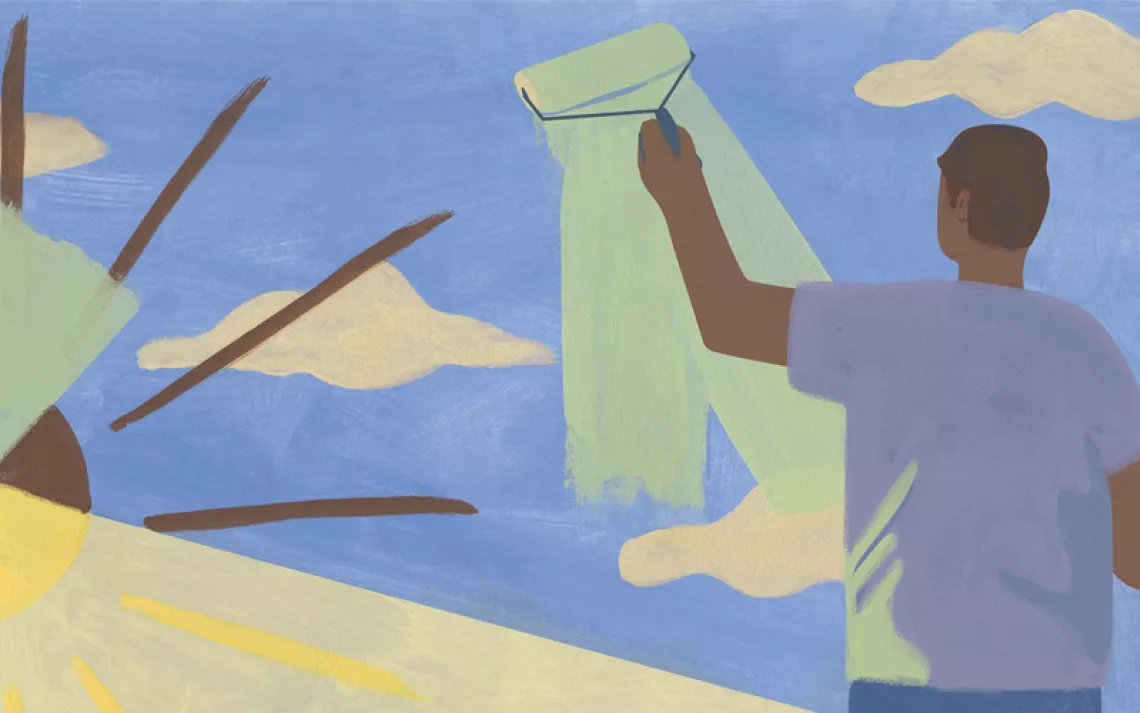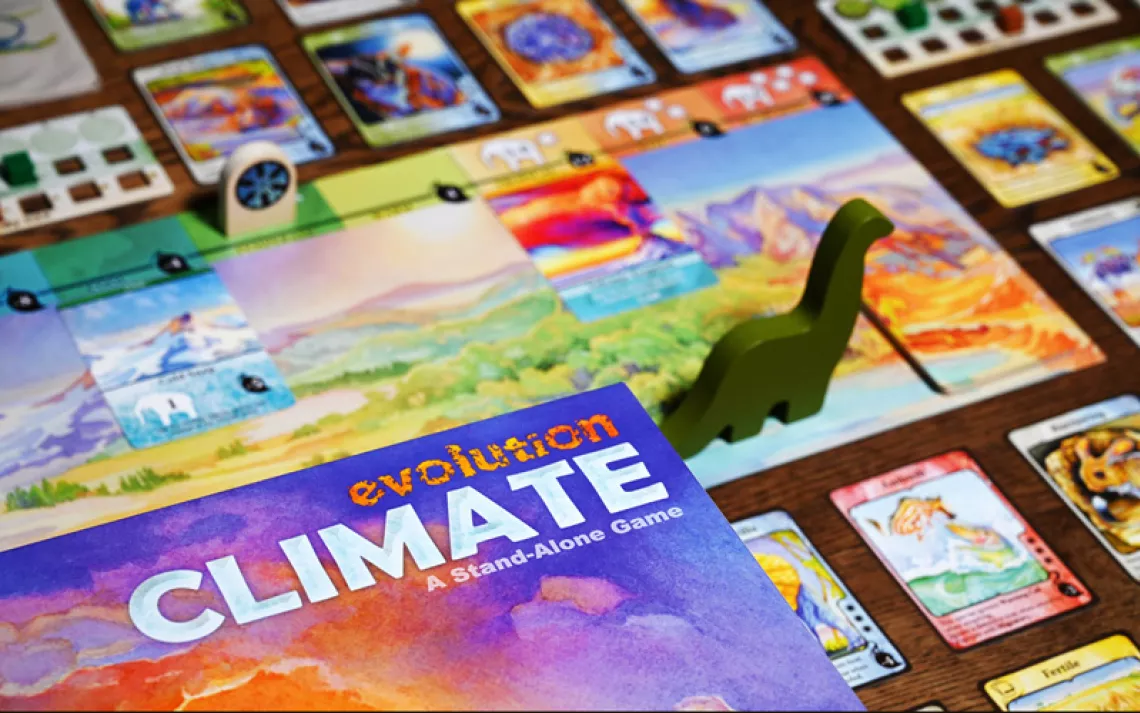ENVIRONMENT EXPLAINED
Pro Tips for Hiking With Young Kids
Like most skills we teach our children, hiking takes time, patience, and bribery
Going to the grocery store with small children can seem like a monumental task, never mind taking your brood on a wilderness journey. But with a little patience, some practice, and a healthy dose of expectation management, you can make hiking a family affair. Keep in mind, there will be good hikes, bad hikes, and “Why are you rolling in poison ivy?!” hikes. My husband and I have decided treks with tykes are worth it, because we want them to value nature and, eventually, to defend it. Here are 10 baby steps that’ll help you make the most of family time on the trail.

Courtesy of Sara Given
1) Think small, and stay positive. Your primary goal is to get your child out there and having fun, so prepare to start small, and in some cases . . . really small. Those first few “hikes” may only be a quarter mile, but celebrate like your preschooler just finished the AT. You want them to feel successful right away, so they associate hiking with feeling good. Conversely, don’t stress if things don’t go well the first few times. Like hiking itself, there will be ups and downs (and maybe some crying).
2) Consider motivation. You may take cues from Thoreau and recharge through long strolls through the woods, but your toddler probably only wants to watch Paw Patrol. Think of other things your child enjoys and use them to sell hiking. Does she love animals, climbing, streams, or dirt? Hiking has all of those! If that doesn’t work, you may need to resort to good old-fashioned bribery—it turns out our three-year-old will gladly courier The One Ring to Tolkien’s Mordor if it means she gets to have a granola bar.
Now is the time for environmental journalism.
Sign up for your Sierra magazine subscription.

3) Know trail topography in advance. Are you hiking around a stunning ravine that prominently features an equally stunning 100-foot drop just inches off the trail? Does your child exhibit a strong desire to be airlifted out of a stunning ravine by an expensive helicopter that is not covered by your insurance? It may be time to reconsider your trail. Choose hikes that you know will be fun for them and not stressful for you. A little “danger” is fine—scrambling on rocks and fallen trees is part of the fun—but think ahead and steer clear from anything that requires more restraint than your child can handle.
4) Food is key. I marveled once at a woman in the grocery store with two perfectly behaved toddlers sitting serenely in her cart. When I asked her secret, she replied, “I just keep feeding them!” Food is motivating to both of our children (and us too, honestly), so we bring plenty of snacks and attach them to certain trail milestones, with promises like, “We will stop to eat at the next big clearing.” Bonus: Snacks (and their packaging) provide ample opportunity to teach your kids the Leave No Trace principles.

She might be getting a little big for this... | Courtesy of Sara Given
5) Invest in a carrier pack. A “baby backpack” makes for a great solution for including younger children on longer hikes. There are many quality hiking carriers out there, but I have always preferred our soft structured carrier, made by Tula. It’s comfortable for me (I’m short), it’s packable, and my youngest is already used to it. Provided with food to eat and my hair to play with, she will happily ride in it for hours. Make sure your child has become acclimated to the carrier ahead of time, though—you don’t want your first experience to be wrestling them into it at the trailhead.
6) Assign “jobs.” Get creative and think of tasks that suit your child’s personality. Our oldest is all about “law and order," so she’s in charge of finding trail markers and handing out snacks. Our youngest, who is a little more capricious, is in charge of pointing out birds, squirrels, and any other wildlife that can handle being startled by an overly enthusiastic toddler. Everyone needs a sense of purpose.

The trail boss | Courtesy of Sara Given
7) Keep them talking. Similar to a family road trip, sometimes you need to find ways to entertain (i.e., distract) everyone. Popular topics and games for our family include:
-
Who is the best superhero?
-
What is the best dinosaur?
-
Age appropriate “Would You Rather” questions
-
“I-Spy” games (spoiler alert, everything is green!)
Anything that makes for a good car game can be modified for the trail. Plus, it’s harder to whine when you’re talking about Wonder Woman (who, coincidentally, never whines).
8) Bring a friend. Friends make everything more fun, and hiking is no exception. One of the best treks we ever took was when our childrens’ friends came along. They gabbed and compared binoculars for miles and miles without ever noticing how far they’d gone. We grown-ups enjoyed ourselves, too, likely because we weren’t the kids’ main source of entertainment.

Courtesy of Sara Given
9) Gear matters. You don’t like to wear uncomfortable footwear or clothing, and whether they know this yet or not, neither does your child. Choose sturdy footwear—we love Keens because of the reinforced toe and waterproof options—and clothing that can adjust to the weather. Layers are smart, and so are a few changes of clothes (especially if there are opportunities to get wet). Kids also like to have their own “real” hiking gear, so get them a little pack and have them carry something light.
10) Compromise also matters. Even with your best efforts, your four-year-old may still demand to hike in his SpiderMan costume. Do what you need to do to quietly pack some other options, and get out the door. Or maybe your kids need to save every very special rock they find along the way. Smile and embrace your budding geologists! There is time to refine their trail skills; the main objective now is to get them out there. Besides, SpiderMan is a cool trail name.
 The Magazine of The Sierra Club
The Magazine of The Sierra Club




